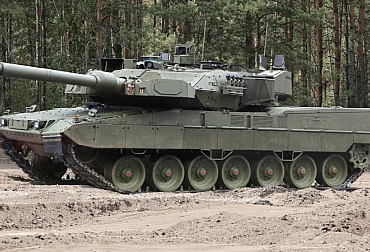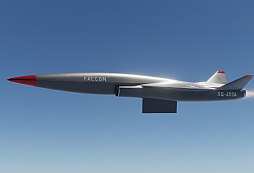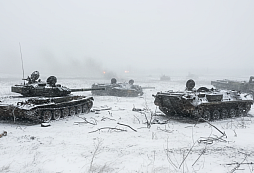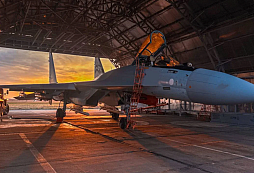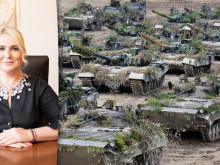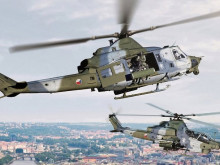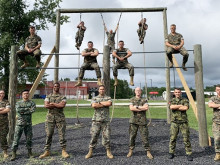New modern bayonet MK.I for CZ BREN 2 assault rifles as a universal tool for many different situations
Soldiers of the Czech Army will receive, together with the latest version of the CZ BREN 2 assault rifle, the new tactical bayonet MK.I. The new rifles are available to the units from the end of 2021. The designer of the bayonet is Major Roman Hippík, who has to his credit, among others, the Charon paratrooper knife introduced in the 43rd Parachute Battalion in 2000, and has been a close combat instructor in the Czech Army since 1994. The weapon can be used not only as a tactical bayonet when mounted on the barrel of an assault rifle, but also independently as a combat knife.
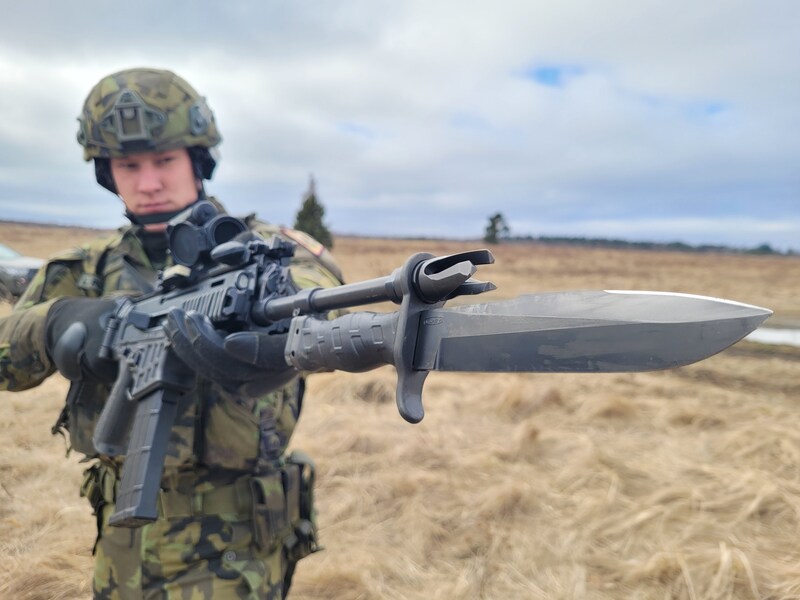 Picture: Soldiers of the Army of the Czech Republic will receive new tactical bayonets MK.I together with the latest version of the CZ BREN 2 assault rifle | Ministry of Defence of the Czech Republic
Picture: Soldiers of the Army of the Czech Republic will receive new tactical bayonets MK.I together with the latest version of the CZ BREN 2 assault rifle | Ministry of Defence of the Czech Republic
Military technology is experiencing unprecedented development and it would seem that in the era of the introduction of drones of all kinds, advanced ammunition, or systems fundamentally increasing the situational awareness of combatants on the digitized battlefield, investments in the development of a weapon conceptually so, let's say, traditional as the bayonet, are unnecessary. Leaving aside times long past in which infantry had disproportionately more time to manoeuvre and fight with cold weapons due to the very low cadence and accuracy of firearms, bayonets of course came into their own during the 20th century.
During the Pacific War, for example, U.S. Marines used bayonet attacks on Peleliu against Japanese positions at an important airfield, and other significant actions of this nature occurred during the Vietnam War. The use of bayonets in more modern conflicts has also been recorded to a limited extent, even to actions in the so-called War on Terror. In 2004, a bayonet attack was carried out by British infantry in Iraq. And we could find more examples.
Although the increasing accuracy and effectiveness of firearms further reduces the potential effectiveness of the bayonet in terms of its use on the modern battlefield, this does not mean that on an individual level such a weapon loses its justification. Especially if the designer finds a suitable solution that combines the role of a bayonet and a combat knife. Nobody doubts the usefulness of a combat knife in the soldier's armament/equipment; if it can be easily mounted on the barrel of an assault rifle and thus obtain, in essence, a long, cold weapon, and, moreover, thanks to the properties of the material used and its well-thought-out design, a weapon that is durable and, with skilful handling, dangerous to the enemy, so much the better. Modern bayonets, such as the American M9 or the Marine OKC-3S, combine these two roles precisely, putting in the hands of the soldier a versatile weapon/tool that can be used in a wide variety of situations.
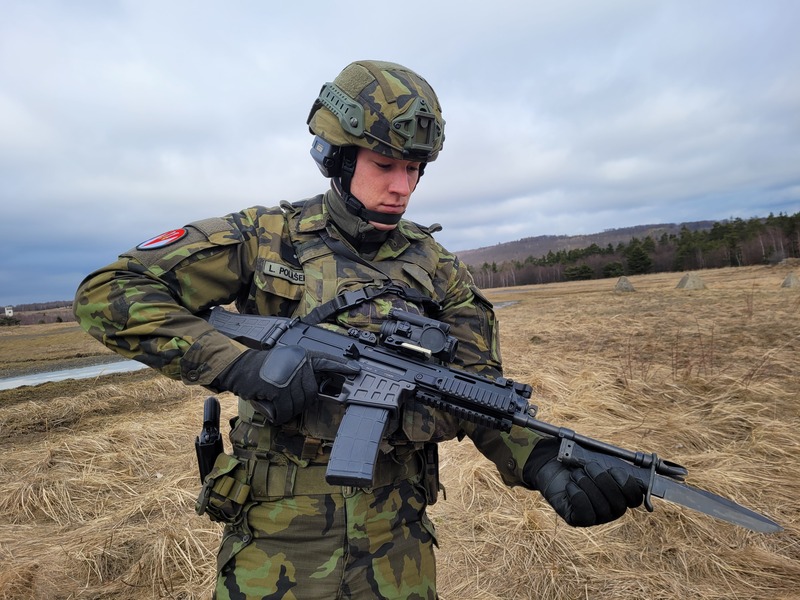 Picture: The weapon can be used not only as a tactical bayonet when mounted on the barrel of an assault rifle, but also independently as a combat knife. | Ministry of Defence of the Czech Republic
Picture: The weapon can be used not only as a tactical bayonet when mounted on the barrel of an assault rifle, but also independently as a combat knife. | Ministry of Defence of the Czech Republic
In their primary role, and admittedly, their importance is declining, and the level of casualties they inflict on the enemy was not particularly decisive even a century ago. Various authors have stated that no more than 2% of infantry casualties during the First World War were caused by bayonets - and this is probably a rather exaggerated figure. A similar figure can be arrived at by comparing casualty figures during the Napoleonic Wars, another hundred years deeper, without machine guns and heavy artillery.
As then, however, the bayonet abounds with a characteristic that may not translate directly into statistics on the outcome of engagements, but it undoubtedly has its effect. Infantry with the bayonet fixed, especially in close quarters battle (CQB), appear aggressive, and the feeling of aggression can help overcome one's fear and give confidence. In the face of confident infantry, the enemy, if given the option, will prefer to retreat. This, after all, was the main significance of fixed bayonets already during the war conflicts fought with black-powder rifles with a cadence of two or three shots per minute and questionable accuracy even at a distance of one hundred metres. To threaten the opponent with an offensive manoeuvre and force him to clear his position in the face of uncertain odds rather than actually engage him in man-to-man combat.
On the website of the Ministry of Defence and the Army of the Czech Republic we read the following about the new MK.I bayonet: The MK.I tactical bayonet is manufactured by Mikov, the author collaborated on it with the CZ Uherský Brod. "The development took two years. During that time, the shape of the blade, guard, socket and ergonomics of the handle were modified, which is similar to the Falco knife of the 102nd Reconnaissance Battalion," explains Maj. Hippík, who was inspired by the UTON M 75 assault knife in its design, for example, in that the saw and file can be inserted into the butt of the bayonet. "Now, however, the accessories fit into the jaws in the same way as the bayonet lock on the barrel of an assault rifle," says Roman Hippík.
MK.I tactical bayonet fits BREN 2 except for the type with 11-inch barrel. During testing, the knife underwent a series of demanding tests: it had to withstand chopping, burning, breaking, under high load on the handle and violent handling both in tactical gloves and heavy soiling. The sheath is also new, with the leather and fabric of the UTON replaced by modern kydex. Removal from the holster is noiseless, the bayonet holds even in a horizontal position and can be placed on a tactical vest with a MOLLE binding.
Lance Corporal Lukáš Poláček from the 71st Mechanised Battalion Hranice also tested the new weapon during a video shoot for TV Army and his first impressions were more than positive: "I was surprised that the new bayonet is smaller and lighter than the previous type for BREN 1, and thus easier to use as a regular knife. A big advantage is the possibility of attaching it to a tactical vest. It worked perfectly in all the situations demonstrated."
The fixed bayonet can be used to lead straight trusts, descending and ascending diagonal slashes, and when removed from the barrel it can be used as a regular combat knife to lead slashes, cuts and points as well as strikes with the butt. The bayonet guard is designed to both drive the enemy's weapon when fixed on the muzzle and to independently cover the soldier's hand, even when the grip is reversed. In addition, the guard can be used when drawing a saw and file.
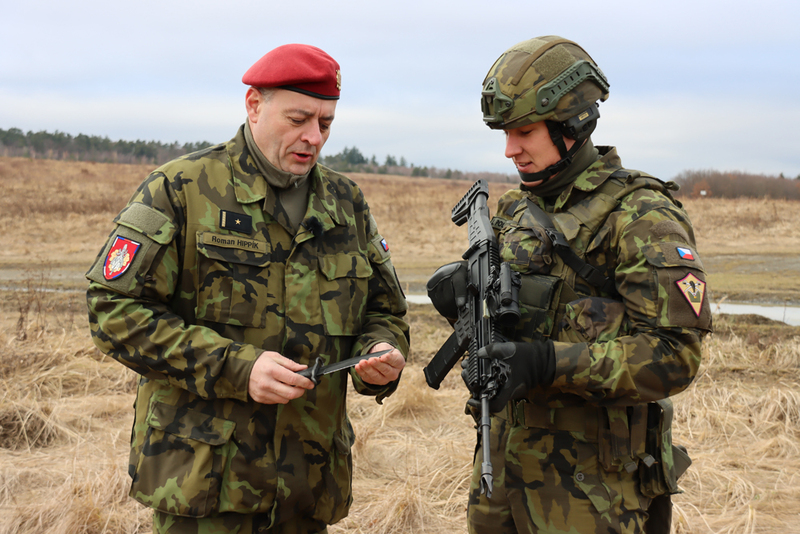 Picture: Mjr. Roman Hippík is the author of dozens of designs for assault knives and daggers that help members of the armed forces in the performance of their tasks. | Ministry of Defence of the Czech Republic
Picture: Mjr. Roman Hippík is the author of dozens of designs for assault knives and daggers that help members of the armed forces in the performance of their tasks. | Ministry of Defence of the Czech Republic
We asked the designer of the MK.I bayonet, Major Hippik, a few questions:
Is it common for the bayonet to be used as a knife? It used to be considered unsharpened.
Yes, you're right, there were bayonets that had different types of blades. Throughout the evolution of this weapon, the shape has always been adapted to the tactics. Some of the earliest bayonets even acted as spears against cavalry when mounted on a gun, and when removed became sabres in man to man combat. It was only on the battlefields of the First World War that they began to take their present form, thanks mainly to the trenches. The fighting sides, especially the shock troops, needed a weapon that could also be used as an assault knife. From contemporary materials, situations are known where mostly German shock troops were armed only with pistols, grenades and modified knife-type bayonets. After the introduction of assault knives and daggers, however, the length of the bayonet blades was again extended to between 25 and 45 cm.
Further shortening of blades occurred on the battlefields of World War II. From then on, most armies began to switch to shorter and more versatile bayonets, which could be used to cut, pry, cut wires and deliver blows with a hammer-like butt. However, this was not commonplace in all armies. Our bayonet for the Model 58 submachine gun is proof to the contrary. Its design was tailored to the tactics used in large battle formations. It was assumed that its length would be sufficient to cover the enemy's weapon attacks and to follow up the points. The shape of the spiked but unsharpened blade of the bayonet ensured that the tissue would be deformed before the actual penetration of the tissue, making the wound more devastating. However, further developments showed that the soldier rather needed a bayonet of such a design that would serve him well as a regular knife.
Many foreign bayonets can also cut fences with a sheath adapter. Was this a consideration in the design of the MK.I tactical bayonet?
I did not consider this option at all when designing the design. The mechanism would both increase the weight of the bayonet and make the whole project more expensive. According to Ing. Martin Šanda from Zbrojovka Uherský Brod, who awarded me the contract, it was supposed to be a simple design that would meet the needs of the current battlefield. It was literally to be a bayonet - a knife that would become every soldier's friend. I replaced the ability to cut wire with the attachment of tools (file and saw) in the lock of the socket. This increased the utility value of the weapon much more.
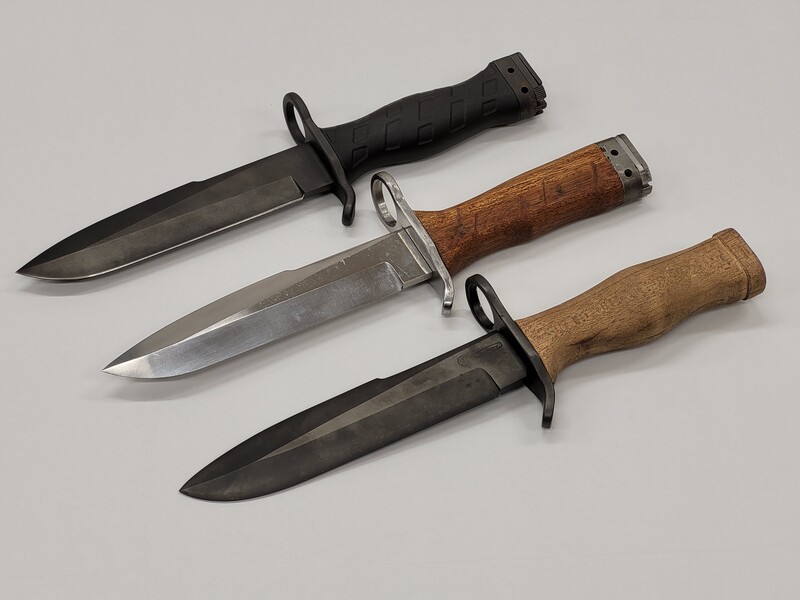 Picture: Individual stages of development (prototypes) of the MK.I bayonet | Ministry of Defence of the Czech Republic
Picture: Individual stages of development (prototypes) of the MK.I bayonet | Ministry of Defence of the Czech Republic
Does the bayonet still have a use in today's modern battlefield (drones and other modern technology)?
For me, bayonets have and will have their place on the battlefield for a long time to come. Their use is of course sporadic in recent times. However, it would be a mistake to deprive the soldier of a weapon that can be used when it comes to man-to-man combat or when ammunition runs out.
The territory where the battle was fought is under control the moment a soldier's foot is on it, not when a drone lands on it. I am by no means a reactionary. The use of modern technology, including state-of-the-art sensors and drones on the contemporary battlefield, is the main job description of our section at the Military Academy in Vyškov, where I am the chief of this section. However, those who have a comprehensive interest in the tactics of ground troops around the world will confirm that there is still plenty of evidence that the era of bayonets is not over. In the British Army, bayonet training is even now becoming one part of a soldier's psychological preparation for combat. The fact that some claim that bayonets have gone the way of the dodo is a consequence of the absence of a larger conflict and a failure to recognise the very nature of the armies' main types of warfare. The asymmetric battlefields we have had the opportunity to experience over the past twenty years have unfortunately not been the conventional battlefields for which we must also be prepared. That is why I will end my answer with the quote, 'Si vis pacem, para bellum - if you want peace, prepare for war.
Video: New MK.I tactical bayonet | YouTube
Could it be said that the MK.I bayonet is a substitute for the UTON knife?
Při vývoji nového bodáku bylo zadání dodat k nové útočné pušce funkční bodák. Útočný nůž vz.75, neboli UTON jak jej mnozí nazývají, není standardní výzbrojí každého vojáka. I v současnosti je určen pro průzkumníky, výsadkáře a piloty. Takže jej používá jen malá část armády. Ostatní vojáci jsou odkázání jen na bodáky nebo nože, které si pořídí sami. Vyplnit tuto mezeru byl další záměr tohoto projektu. Jak už jsem uvedl, nový bodák, ač je součástí soupravy útočné pušky, by se měl stát běžnou výzbrojní součástkou. Voják by s ním měl plnit veškeré pracovní činnosti, pro které byl zkonstruován. Pokud zůstane ležet ve skladech, bude jen sílit povědomí, že bodáky jsou přežitek.
















